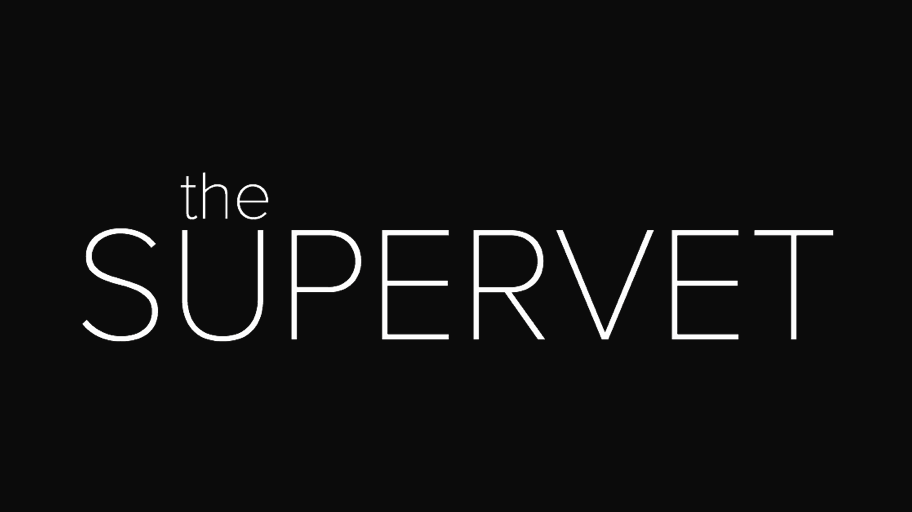Amie, a one year old stray cat, was found by Barbara with a badly fractured leg. Due to the lack of blood supply in Amie’s paw after surgery, Noel has to pull out all the stops to save her leg, including combining cutting edge medical techniques with an age old treatment – leeches!
Barbara, a self-confessed mad cat lady, brought in her latest adoptee, one year old black cat Amie, for further investigations and management of a leg fracture Amie had been found abandoned with. Amie was discovered in Barbara’s neighbour’s garden and her family vet estimated that Amie had been wandering around on the broken leg for at least three weeks. Taken in by Amie’s sweet and gentle nature, Barbara did not hesitate in making her a permanent member of her family and in pursuing the very best healthcare for her.
In order to give Amie the best options for treatment available, Barbara brought Amie to Fitzpatrick Referrals, to see whether something could be done for this lovely cat that had secured a firm place in her heart. Barbara was met by Dr Miguel Solano, senior orthopaedic specialist at Fitzpatrick Referrals.
Miguel reviewed the x-ray images taken by Barbara’s local vet and saw that the bones had already started to heal, though in the wrong position, causing her elbow and carpus to be misaligned. Miguel explained that surgery would be Amie’s best option, but that he would need to re-fracture her leg in order to move the bones into the correct alignment. Miguel ordered a CT scan to get a fuller picture of how the bones had healed but he spotted another problem. Where the fracture had started to heal itself, it had left the bone badly deformed making the proposed surgery more complex and far riskier than originally anticipated.
Every surgeon at Fitzpatrick Referrals is highly skilled and passionate, and the team regularly work together to achieve the very best outcome for each and every patient. To ensure the best result for Amie, Miguel asked Professor Noel Fitzpatrick to lead the complex surgery and for himself to assist. The objective of the operation was to get the carpus and elbow into a straight line once more, so Amie could walk with as normal a leg as possible. Noel cut the ulna and mobilised the radius and the ulna bones from where they had started to heal together. After this, Noel carefully removed a wedge of bone from the radius, which enabled him to realign Amie’s carpus and elbow by rotating the radius bone back by just over 90 degrees. Everything was fixed into position using plates and screws and the wedged portion of bone that Noel removed wasn’t wasted – it was crushed into tiny pieces and stuffed over the fracture site to help with the healing process.
Miguel placed an external skeletal fixator to support Amie’s weight and transfer the loading forces whilst her bones healed. Though the surgery to realign Amie’s leg was successful, the team remained concerned that the nerves, veins, arteries and vessels in her leg would be compromised as they had to be eased away from the scar tissue surrounding the initial repair. Unfortunately, these fears were well founded, and during a routine check two days later, Noel noticed a lack of blood supply to Amie’s foot.
The team were in daily contact with Barbara to update her on Amie’s progress. Amie was becoming a firm favourite among the staff as she was such a lovely cat who bravely met her challenges. It was deeply disappointing for the team and Barbara to face these setbacks. Despite this, they were dedicated to doing everything they could to treat Amie. If the leg could not be saved, amputation would be the only option left which made them even more determined to find an alternative.
Having to act quickly in order to save Amie’s leg, Noel called upon an old fashioned but effective treatment – leech therapy. Noel hoped that the leeches would suck the pooled blood that was gathering in Amie’s lower leg and encourage optimal blood circulation. The leech therapy lasted for 25 minutes and Noel was reassured to see that the leeches had swollen with blood – a good sign, as if the foot was dead the leeches would have had nothing to suck on. The leech therapy continued for a week, and a blood supply had returned to most of the foot but, unfortunately, Amie had another obstacle! A significant area of the skin on her foot had died, so Amie would require a skin graft.
Noel took Amie to his other hospital, the Oncology & Soft Tissue Hospital in Guildford to see senior specialist in Soft Tissue surgery, Dr Laurent Findji. For the skin graft, Laurent took some skin from Amie’s chest, made a series of tiny incisions through it to encourage healing onto its new body part and to allow it to stretch further before meticulously suturing it onto Amie’s foot. The next 72 hours were critical, and so the team monitored Amie round-the-clock. They were not out of the woods yet.
Thankfully, biology was smiling on Amie and the team, and the skin graft was a success. The external fixator frame was able to come off and Amie underwent regular rehabilitation including hydrotherapy to build the strength in the healing leg and foot.
Though it had been a long and difficult journey, we hoped that the faith and belief of Barbara and the team throughout would go on to be reflected in Amie having a long life, full of happiness on all four legs. Barbara was delighted to take her friend home, enriched by the knowledge that she had given Amie the very best chance in life and they could now go on to grow old together. We feel lucky and delighted to have been able to help this lovely family.
